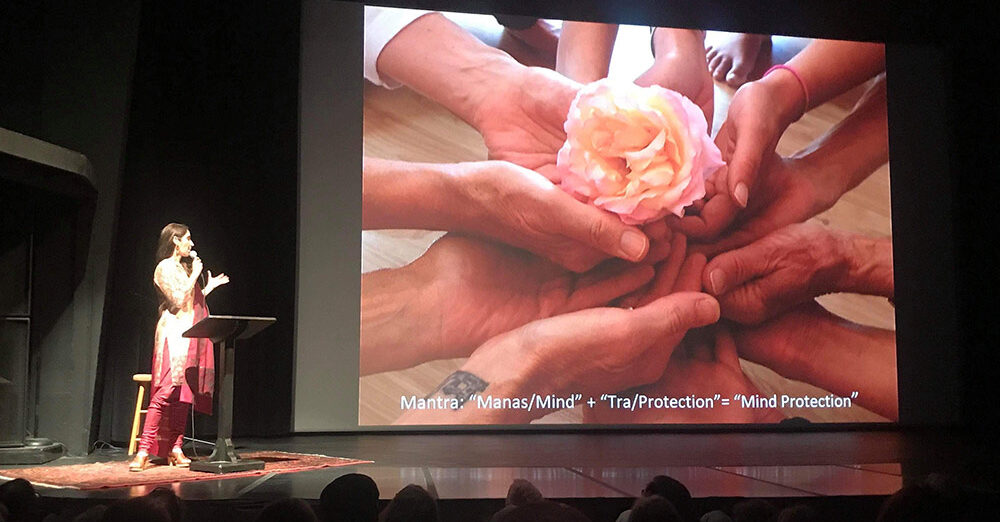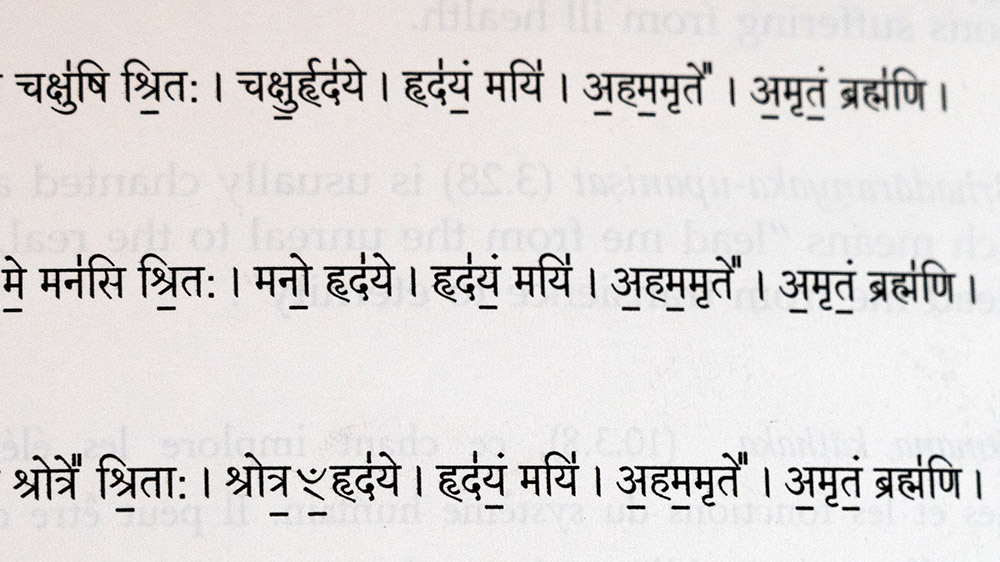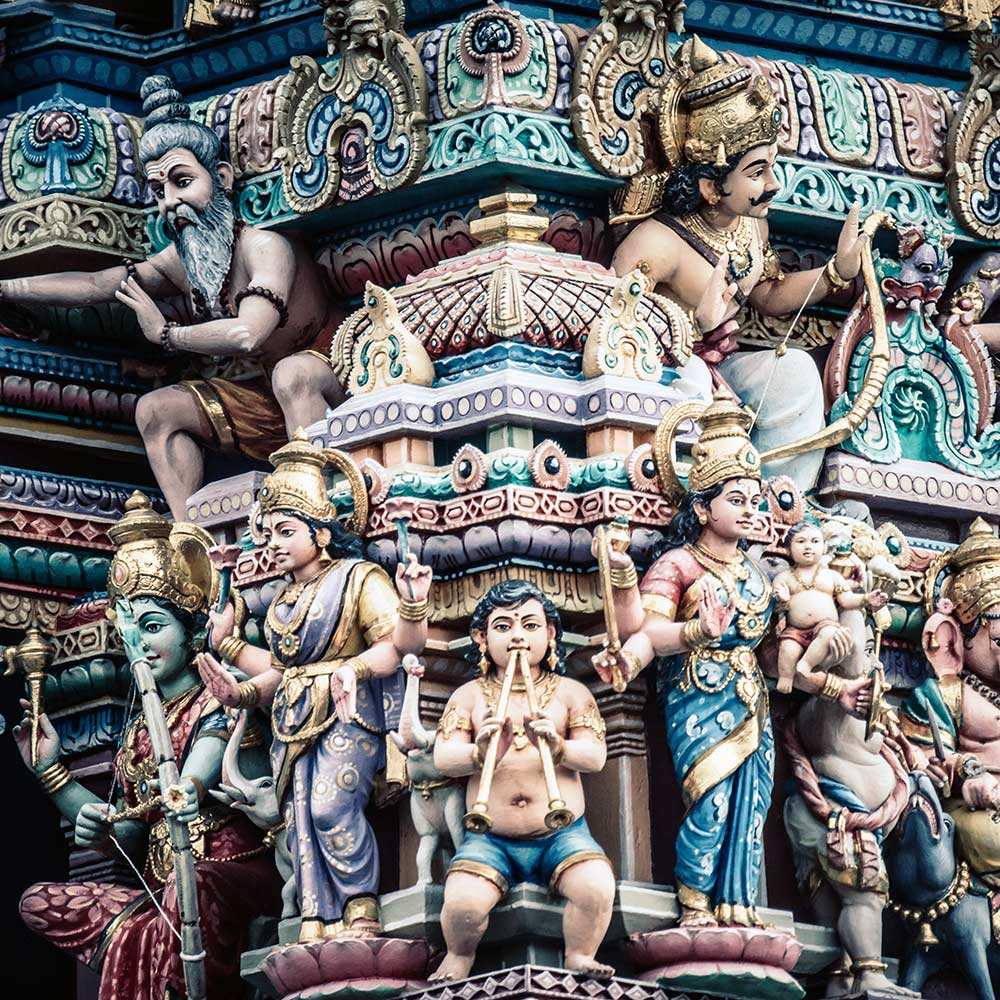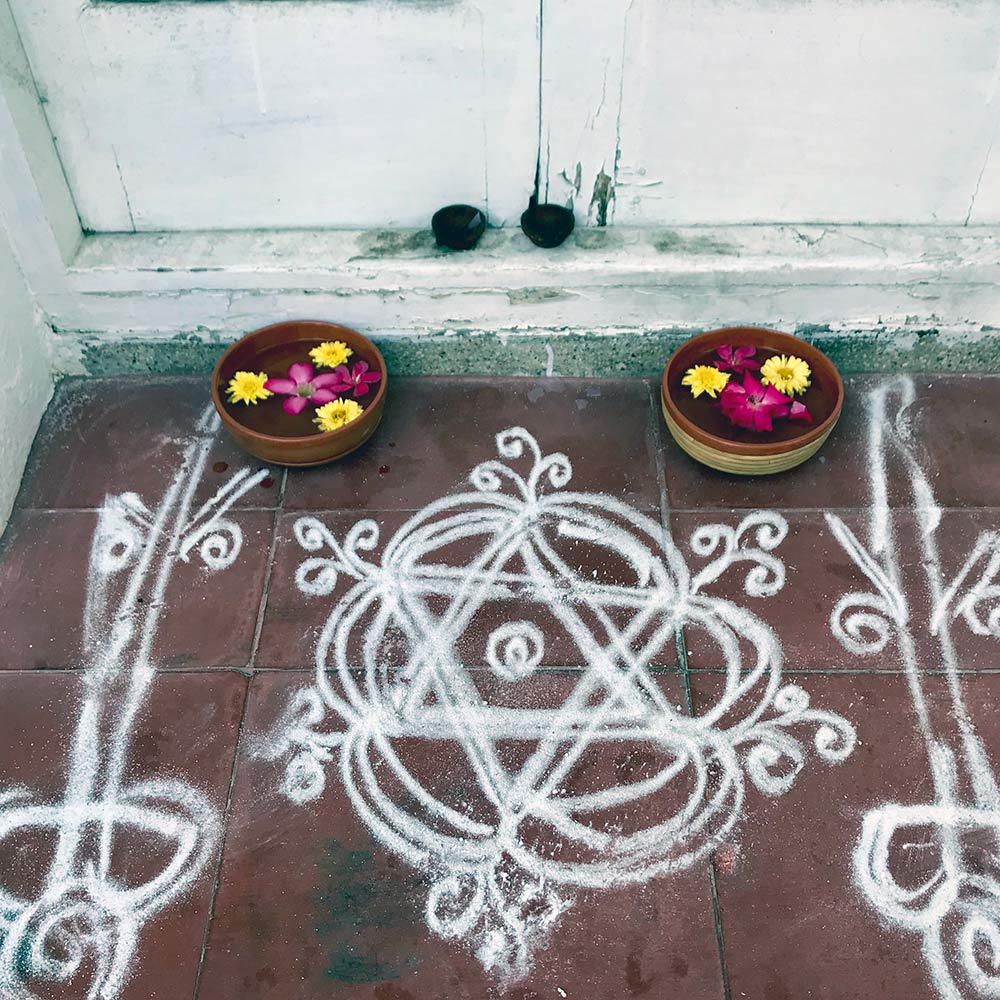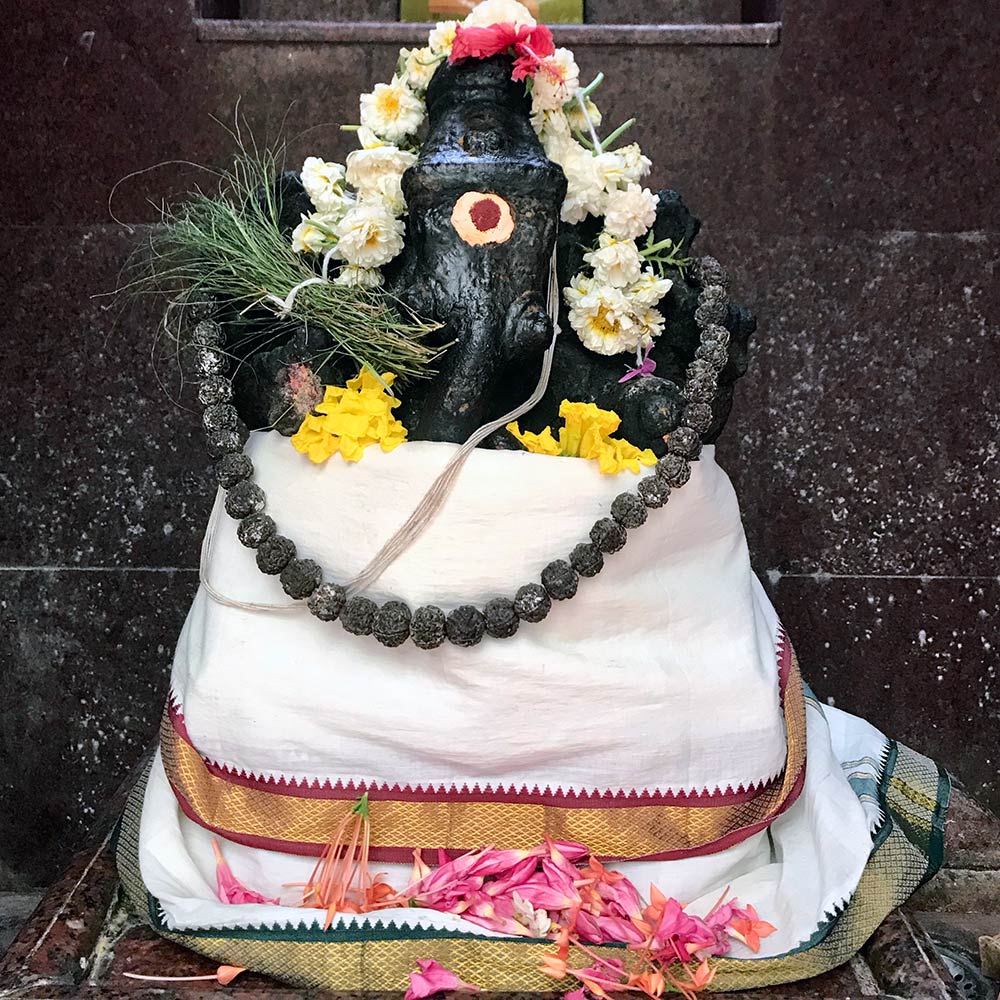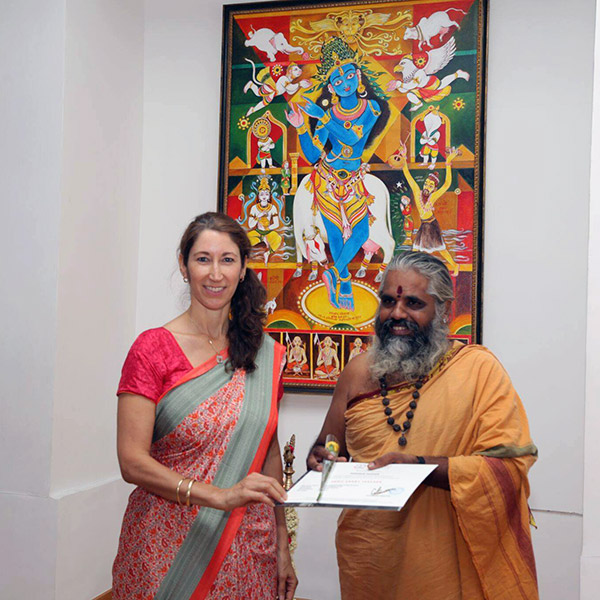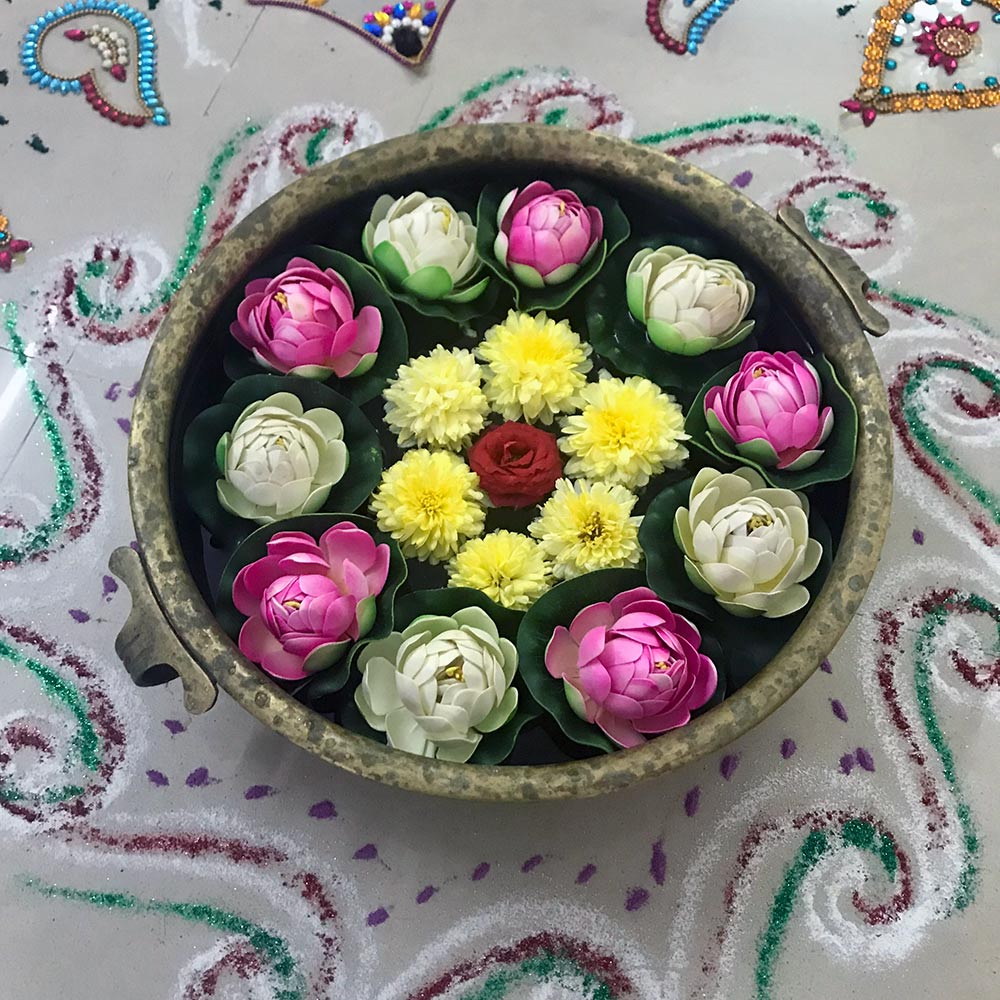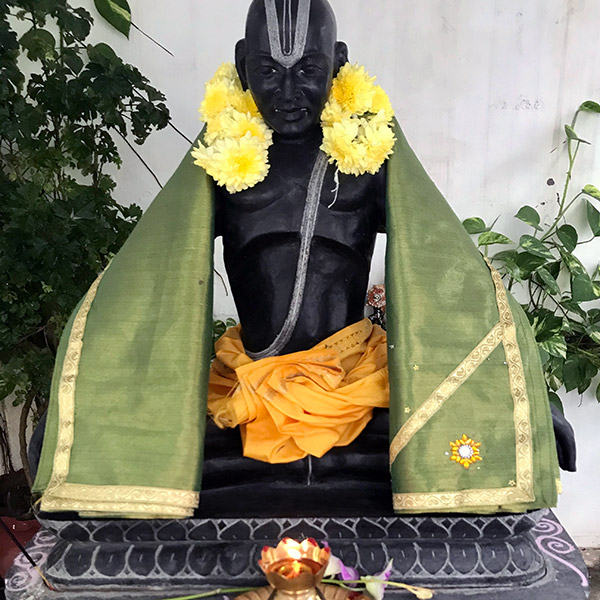Vedic Chanting
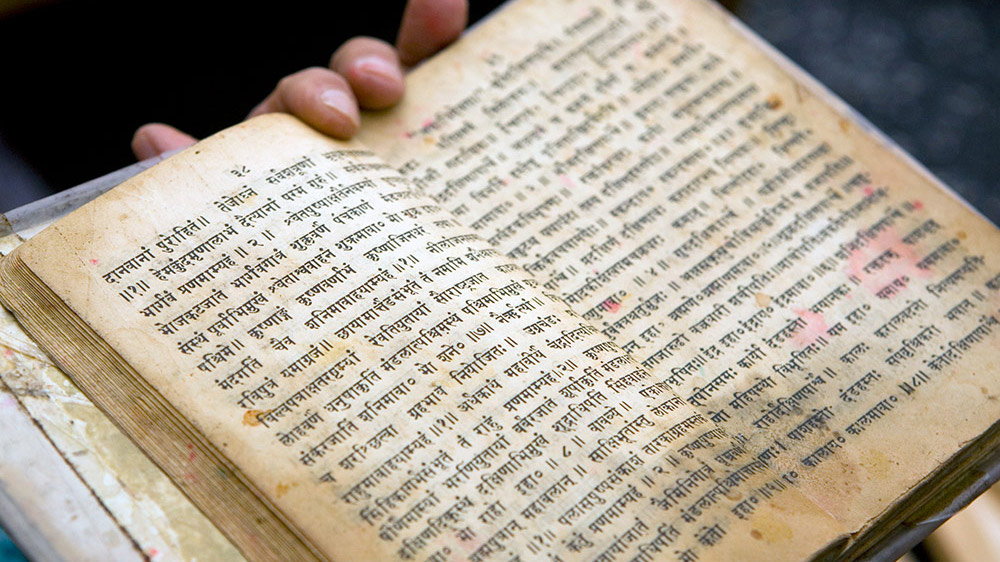
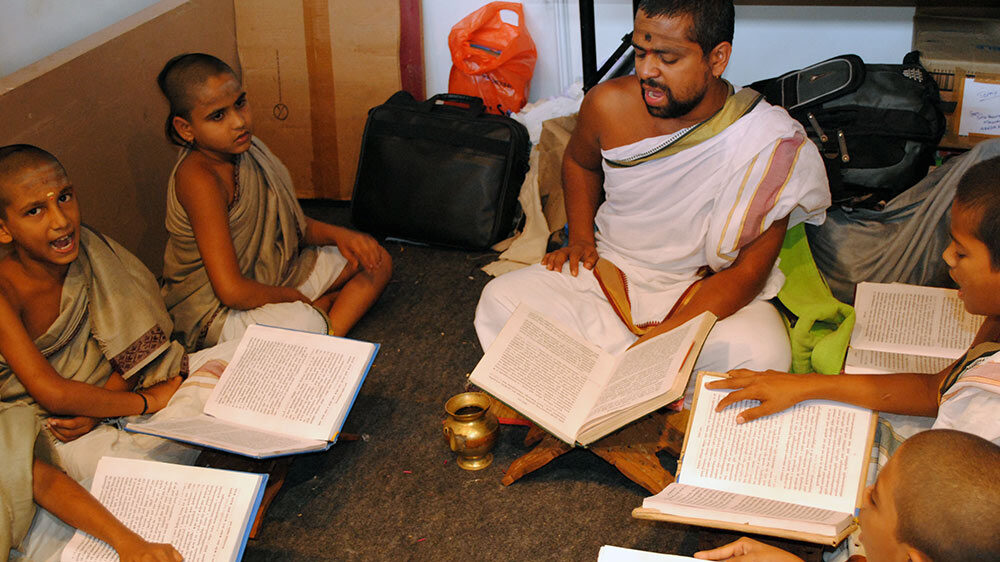
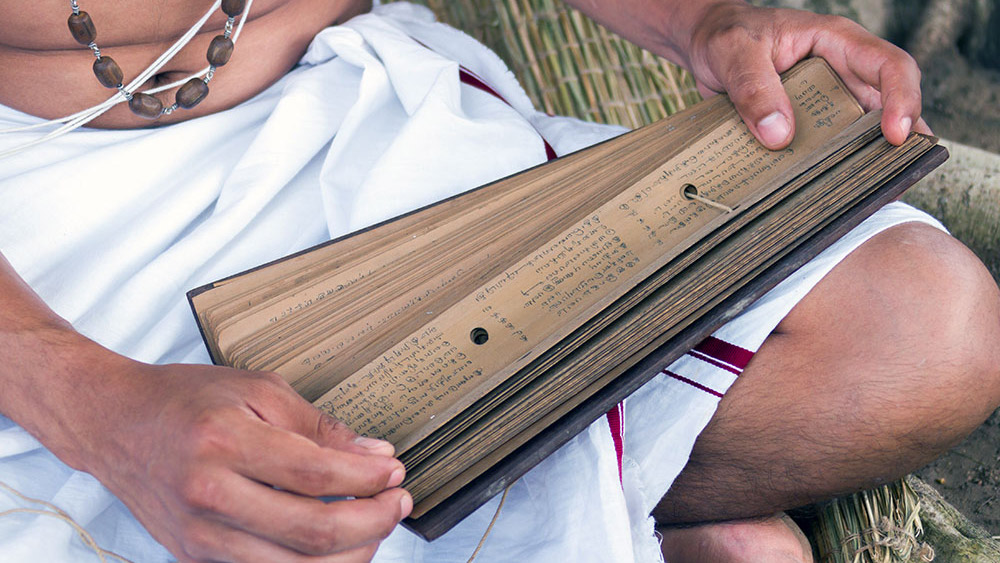
Sacred Language that Changes our Consciousness
Beyond Asana:
Activating Subtle Energy
Vedic chanting is the practice of vocalizing Sanskrit sounds for purification and self-realization. The study, contemplation and chanting of the Veda-s is called adhyayanam, which means “to come closer to yourself” or “to make a pilgrimage to your heart’s center”.
Yoga is more than just asana. The Veda-s are the source text of yoga. A complete understanding of the yogic system includes Vedic chanting and Sanskrit mantra-s as the Veda-s. Vedic chanting expedites and enhances your spiritual path or yoga practice to deeper meditative states.
Vedic recitation provides a tool for self-knowledge or svadhyaya—a way to come closer to your higher Self. With practice, you gain understanding of universal principles, cultivate self-awareness, and sharpen discernment and mental focus.

What Are The Veda-s?
Veda = Knowledge
Vedic chanting is the oldest unbroken oral tradition in existence. The Veda-s are considered the most important Hindu texts and believed to be “the word of God”. Originally transmitted orally, the Veda-s were written in classic Sanskrit language approximately 3,500 years ago.
These Sanskrit hymns praise God and express eternal laws of creation and dharma, including duties, rights, laws, conduct, and virtues. The invocations contain traditional wisdom that is still relevant to the challenges we face in our faced paced, modern lives.
Considered śruti or “that which is heard”, the Veda-s represent the most ancient and authoritative source of wisdom of Hinduism (known as Santana Dharma or “Eternal Way of Life”).
The ancient rishis or “poet seers” of India “heard” these sound vibrations while absorbed in intense meditation. The rishis transmitted this knowledge or vidya to their disciples who passed it onto their students in the student-teacher-tradition of guru-shishya parampara.
This tradition has survived centuries of invasion, social upheaval and war due to strict adherence to pronunciation and grammatical rules. The ancient Indian culture and Brahmin priests have devoted their lives to maintaining these sacred sounds.
The Veda-s are comprised of four volumes of Sanskrit poetry, hymns, prayers, rituals, myths, incantations, and philosophical dialog.
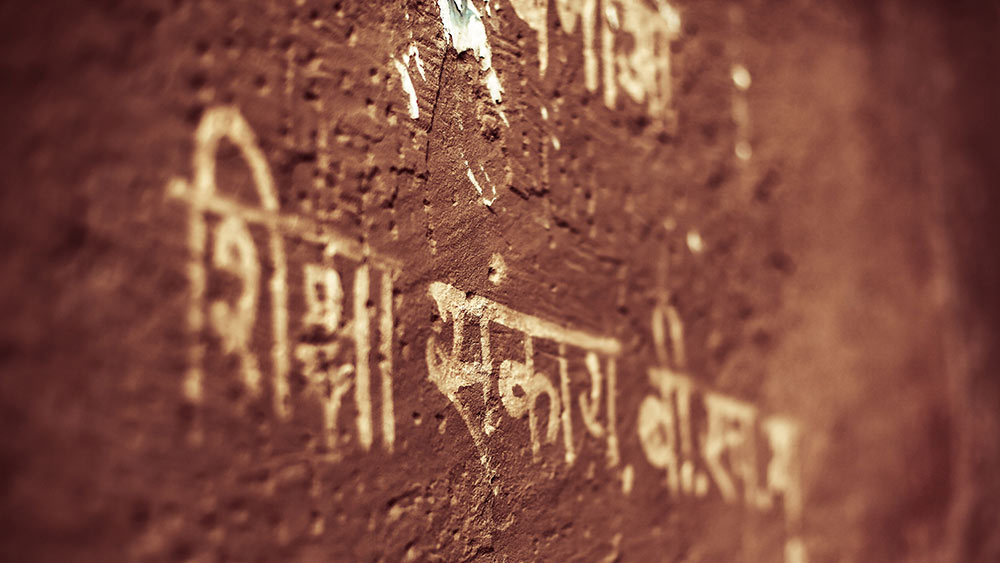


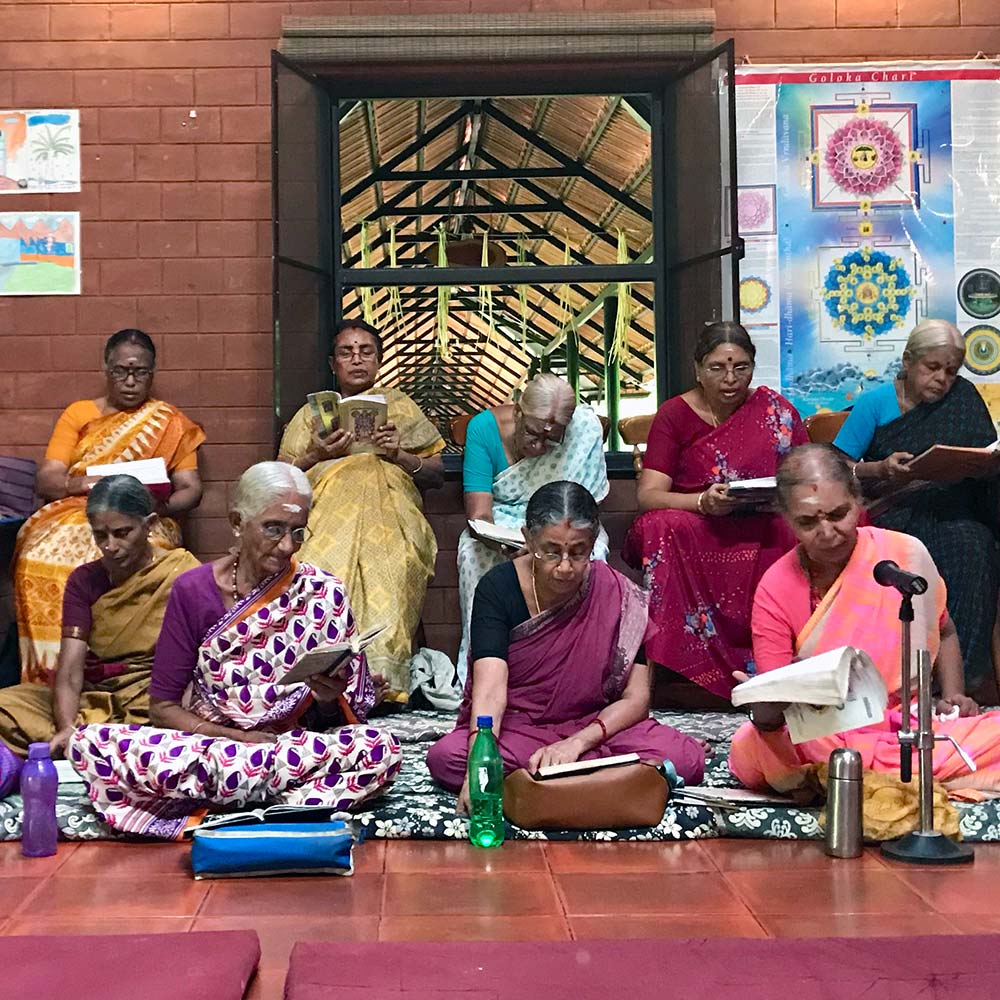
How Vedic Chanting is Different from Kirtan
Call-and-Response:
Strict and Free Forms
Vedic chanting is very austere. Governed by strict rules of pronunciation, meter, strength, intonation and continuity, Vedic chanting involves formulaic complexity and is precision. Chanting otherwise would dilute the mantra-s and hymns of their power.
Kirtan or bhajan are devotional songs or chants accompanied by musical instruments. This free form of chanting relies on no fixed form or rules. Kirtans are composed about Gods meant to awaken our devotional nature. The Sanskrit word kirtana actually means the narrating or telling of a story.

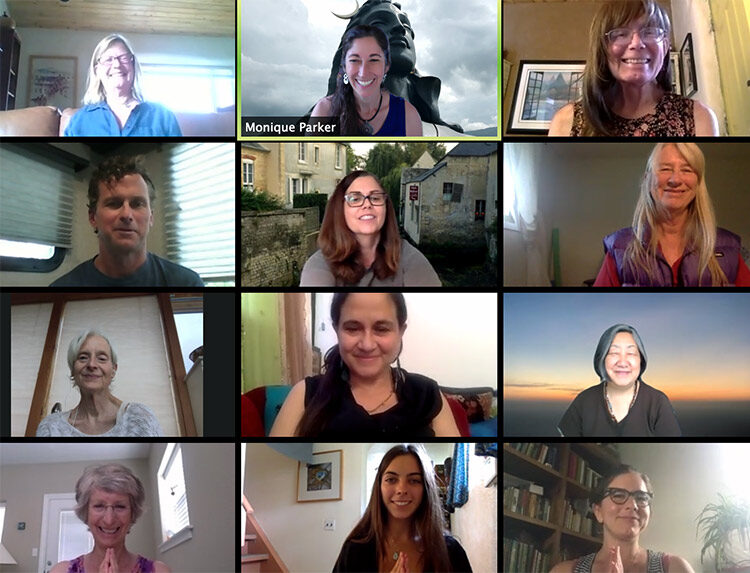
Learn
Vedic Chanting
Students learn to listen and have the experience of being listened to through the traditional call-and-response process with a qualified teacher. Simple, clear instruction is given at a pace that is comfortable to the practitioner. These subtle sounds are accessible regardless of the experience level of the student.


Mentor with Me
Dive deep with me with 1:1 or small group Vedic Chanting sessions.
“Monique is one of the greatest teachers and healers I’ve ever had the honor of working with… I learned to make sounds I never imagined possible and to feel a deep peace and groundedness because of it… If you want to discover your voice and reclaim your power, give yourself the gift of working with Monique. She is a woman of great wisdom and grace and her teachings are nothing short of magic.”
– Elizabeth, Oakland, CA

The Benefits of Vedic Chanting
Scientific studies show that chanting mantra-s alleviates negative emotions, stabilizes moods, and boosts immune system functioning. Research supports the effectiveness of Sanskrit mantra-s for healing due to vagus nerve stimulation, improved pulmonary function and increased lung capacity.





